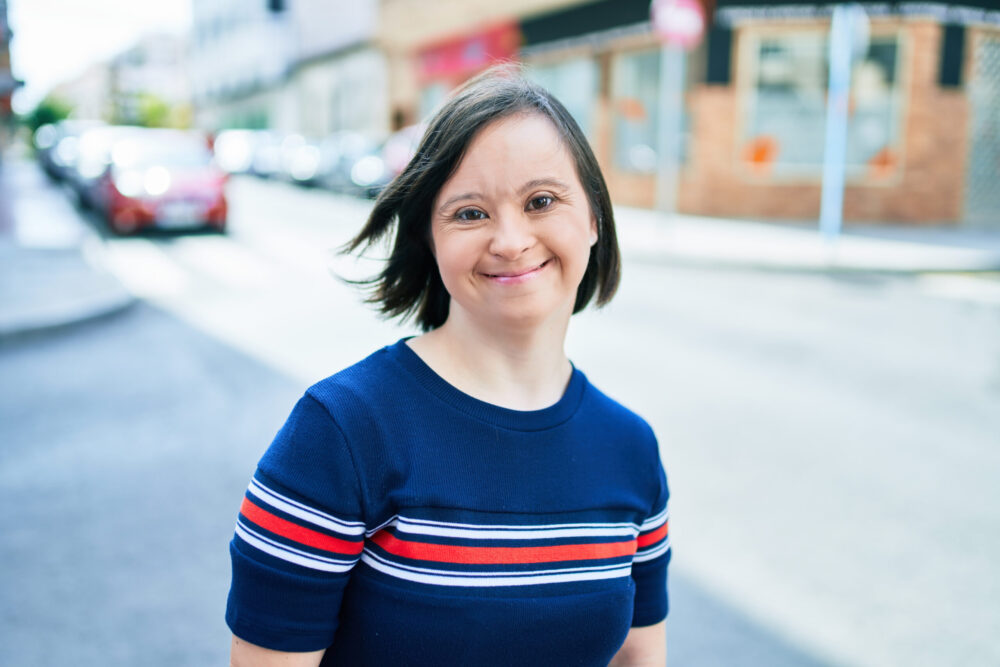You’d think that the National Disability Insurance (NDIS) scheme would be equally as accessible to men and women. But our new research suggests this isn’t the case.
Only 37% of participants in the NDIS are women and girls, even though they make up about half of people with disability under 65. There was also some evidence (p. 49) from early in the NDIS roll-out that women were more likely to have unmet support demands than men (e.g. they were funded for supports that they then couldn’t access).
So, women are underrepresented in the NDIS and may also be less likely to get the supports they need once they are on the scheme.
For example, Deaf Aboriginal woman Nellie told us:
I’ve also experienced a lot of gender issues with the NDIS. I’ve never had one woman contact me, ever. They’ve all been men, and I’m not completely comfortable with that. I mean it’s fine, but if you had a white hearing man, then the power is there, and they don’t understand disability on top of that, I feel very uneasy and passive and it’s a little bit like they become the aggressor and I retreat.
Nellie’s experience – and many of the other women we spoke to – is consistent with international evidence that women with disability tend to be a particularly marginalised group when it comes to health and social care.
According to the NDIS, female underrepresentation is due to the scheme supporting a lot of younger people with autism, developmental delay and intellectual disability – and those things are most likely to be diagnosed in men and boys. But that only covers who gets onto the scheme, not what their experiences are like once they have been accepted.
Women’s disability advocacy agencies have been concerned for some time about gender equality in the National Disability Insurance Scheme (NDIS). But we couldn’t find any academic research about gender and the NDIS, so we interviewed 30 women from the ACT and Victoria, with a range of ages and disabilities, about their experiences with the NDIS.
Our study
Most were on the scheme already, but some were applying or had thought about applying. All the names in this article are pseudonyms.
We found that some women had a great experience on the NDIS, or felt that the good significantly outweighed the negative. When it works, the NDIS can be truly transformative.
However, many women had experienced significant difficulties in applying for the NDIS, interacting with the NDIS, or using their plans once they were on the scheme.
Others had thought about applying but were too discouraged from what they had heard about other people’s experiences.
Gendered barriers to the NDIS
There were lots of barriers that women talked about, including the burden of NDIS administrative processes and how difficult it can be to learn how the scheme works, but we have just published an article exploring some of the most gendered barriers.
Firstly, dealing with the NDIS can be difficult for people – especially for women – because as a personalised funding scheme it requires participants to know what their needs are and to articulate them and advocate for them on an individual basis. But from what we heard, the system is not very flexible in accounting for participants’ varying experience of self-advocacy and service navigation.
We know that getting the right services on the NDIS requires a lot of individual effort because women used words like ‘push’, ‘fight’, ‘battle’, ‘struggle’ to talk about their experiences. Marjorie said that “everything I’ve gotten from the NDIS I have had to push for”. While some felt confident to self-advocate (Daphne said she had “more front than Myer”), more than half the women mentioned difficulties with self-advocacy, said they didn’t feel disabled enough to be on the scheme, or felt it was more important to put others before themselves.
This is gendered because women are socialised or expected to be more selfless than men, to be the care providers, and can be penalised more than men for speaking up for themselves. For example, Peta told us: “I just think like being a woman …just this idea that you just kind of have to accept to some degree, you just have to put up with it. You know, you’re conditioned to care and just put up with shit that comes along or to not speak up if someone offends you.”
Some women also felt that NDIS system actors (such as planners or disability service providers) react differently when men with disability self-advocate – for example being more likely to give men what they want, or being more intimidated by male anger, or more likely to label women who self-advocate as stubborn and difficult.
Several participants felt that self-advocacy was compromised by caring roles. Dianne was particularly concerned about this in the context of women with disability caring for children with disability: “I know of cases where women have been advocating for a child with a disability or an adult child with a disability, and they’ve had to fight all those battles, and then they’re literally too exhausted to fight their own NDIS battle. And if like me, if they’ve hit a brick wall at some point with what they’ve asked for, they’ve just gone oh, I can’t do this. So they’ll actually go without, rather than continue trying to advocate for themselves.”
Other difficulties with caring responsibilities included feeling like the NDIS did not recognise and support their mothering roles, that it tried to keep their disability needs separate from those of their children (which did not work in practice), or that it did not recognise caring responsibilities for extended family members.
For example, Melissa said, “My motherhood gets completely thrown out the window”. Nellie, who is an Aboriginal elder, had significant caring responsibilities for her extended family and community, but had not been given support to carry out these responsibilities. She told us:
“I don’t believe that the NDIS themselves really have any sort of clue of what it means when you’re talking about the Aboriginal context and you’re talking about women within the Aboriginal context.”
Lastly, some women talked about the types of diagnoses that men and women are more likely to have, and the fact that it’s easier to get NDIS support for male-dominated disabilities than female-dominated. As January (who had ME/CFS) described it: “The things that women are more likely to be diagnosed with, which are overwhelmingly autoimmune conditions, chronic illness-based conditions, these are the things the NDIS spends a really enormous amount of energy trying to convince you that you can’t use NDIS for.”
There is also a growing evidence base that autism is diagnosed more in males for gendered reasons, and not because the condition genuinely occurs in three times more men and boys than women and girls. So, there are likely to be many girls with autism that are missing out on the support they need because it is harder to get a diagnosis.
What action is needed
We were only able to scratch the surface in our exploratory study, but from talking to these women about their experiences, we think that the NDIS should do more to support women and girls to participate fully in the scheme.
Advocacy groups have been recommending an NDIS Gender Strategy for years. We also think there needs to be better integration between the NDIS and existing women’s services – for example, building a system interface between the NDIS and critical women’s services such as specialist domestic and family violence services, sexual and reproductive health services, and parenting and carer support services.
And women’s disability advocacy organisations need to be better resourced to create information pathways and peer networks to support women in getting more fair treatment in the NDIS, as well as to help the NDIS improve at a systemic level.
- We’d like to thank our partner organisations, Women with Disabilities Victoria and Women with Disabilities ACT.
Please note: The feature photo is a stock image.







